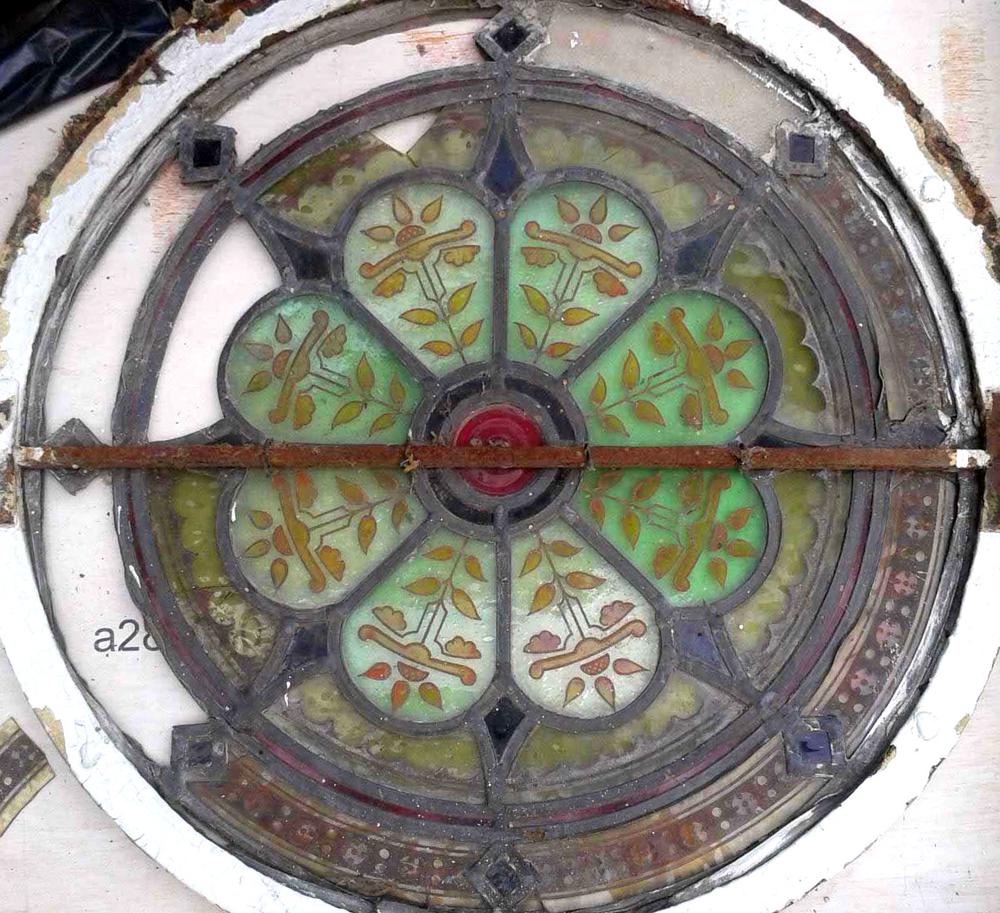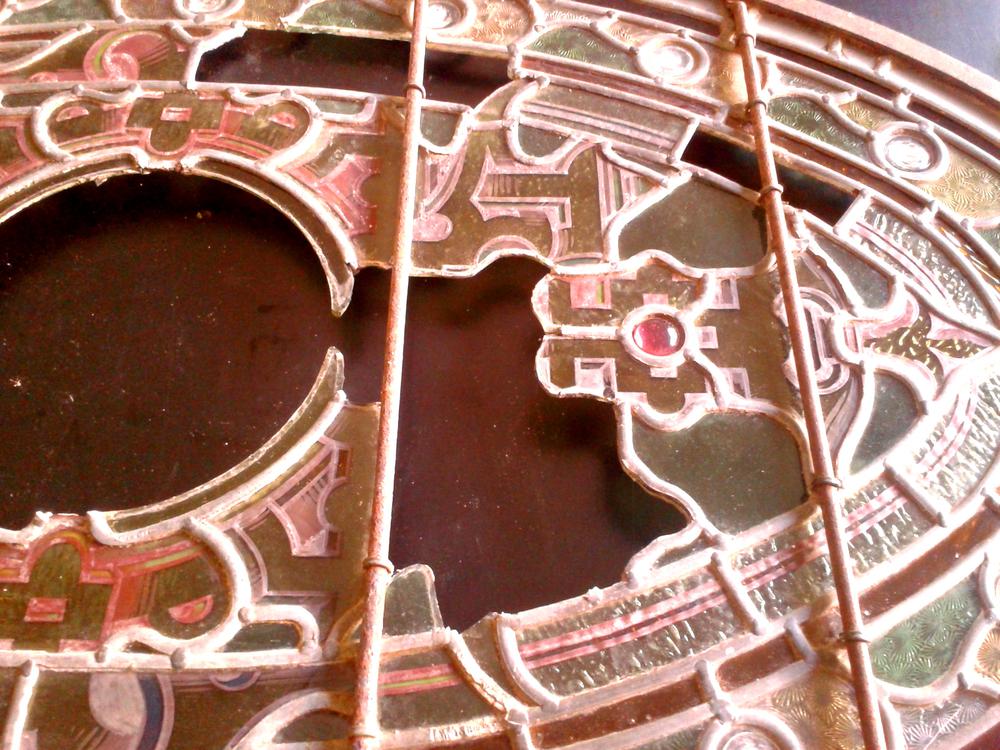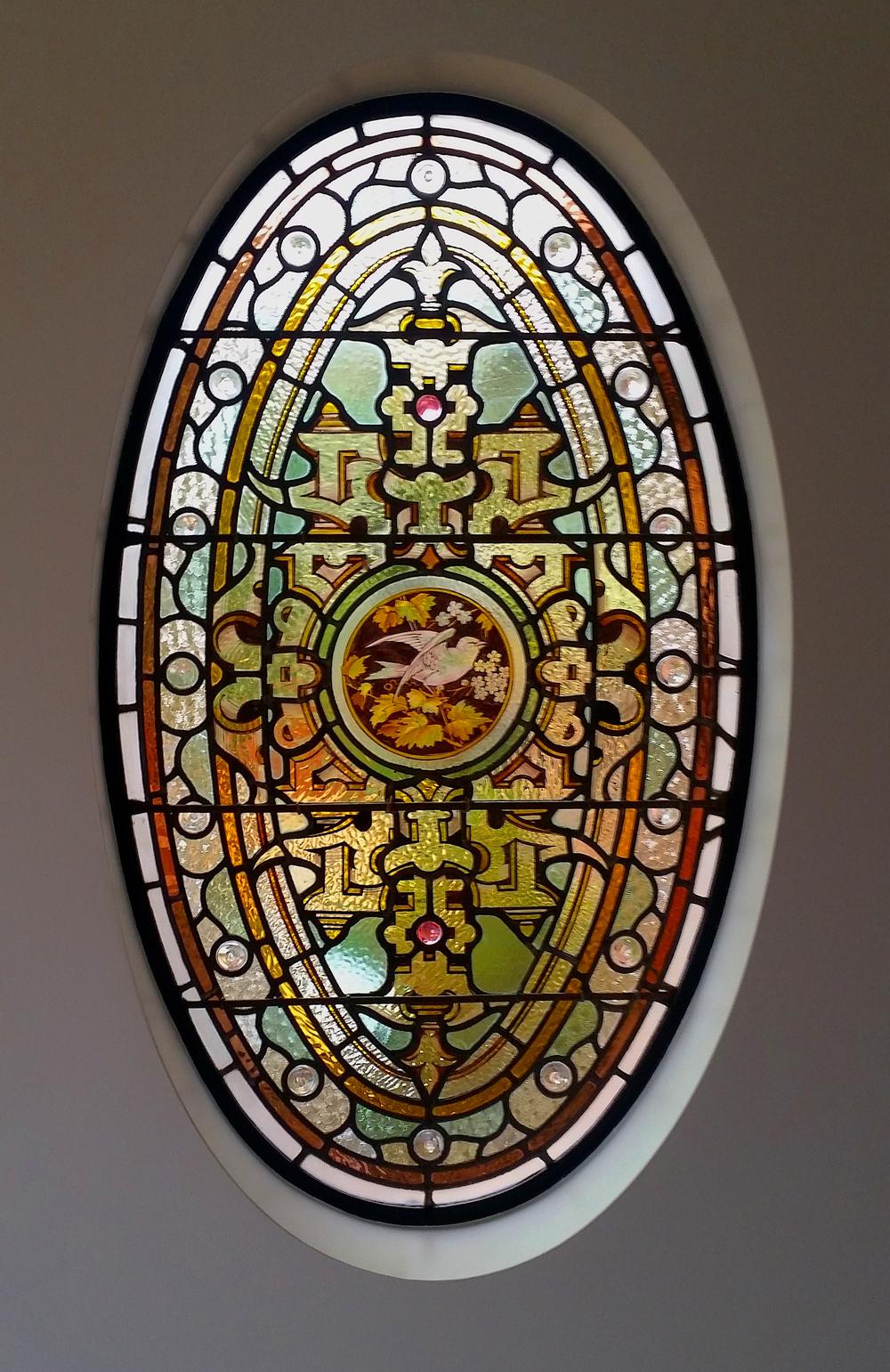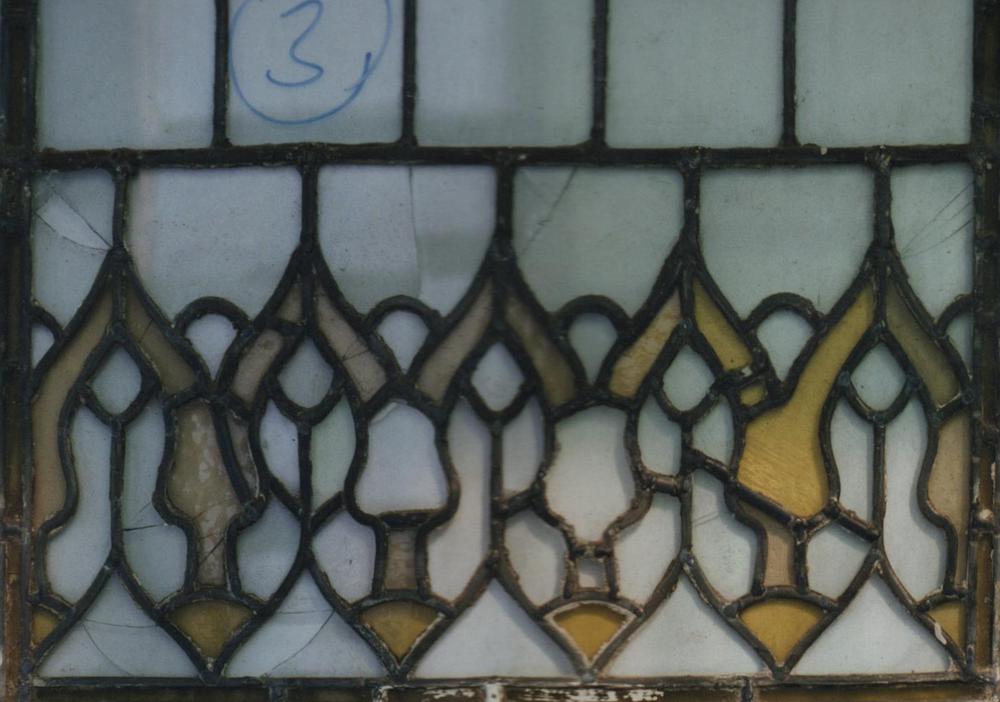Services
Restoration, Repairs & Replicasview examples

Pivoting porthole window requiring new hand-painted panes, and complete rebuilding.

Porthole sash window from Scots College Bellevue Hill: restored.
One of Sydney's distinctive features is its heritage of domestic leaded window glass, or leadlights. For well over a hundred years, local firms have been fitting out homes with this stylistically evolving decorative glass. After so many decades Sydney's stained glass heritage is holding up well, but as with all building components, leadlights need to be maintained. Occasionally, repair or replacement becomes necessary and you will need an experienced artisan to carry out the correct repairs cost-effectively.
Australia Street Stained Glass are expert in replicating leadlight panels that are missing from a set, having been removed at some point in the past- or in the case where you may want a matching set for another window.
Leadlights in doors and in opening sashes take a lot of punishment
over time and, although we often find panels appear to be in good
condition after 50-90+ years, once removed from their settings for
repair it is advisable to dismantle and re-build them with new lead and
waterproofing compound.
Well made windows will have steel support bars attached horizontally with copper wire. Without these 'saddle-bars' a leadlight door panel will flex and eventually bow fatiguing the metal and causing the joins and glass to crack. Leadlights imported with mass-produced doors and those made locally to stock designs frequently fail for this reason.

Central feature of a Victorian leadlight in terrible condition before restoration.

The same Victorian window restored to its full glory.
Where leadlights are in poor condition they need to be removed from the frame/sash and re-leaded or partly re-leaded. As re-leading is an involved process comparable to creating a leadlight from scratch, this work needs to be done at the bench. Glazing putty is 'hacked out' from sashes, or door mouldings are carefully removed, and the openings temporarily boarded up while the leadlight is being repaired. Temporary glazing may also be an option for some windows.
Rebuilding/re-leading involves taking a rubbing of the leadlight, soaking it to soften and remove old cement from between glass and lead, dismantling it, cleaning the glass of old paint and putty residue, then reconstructing it by inserting the old glass into new lead ‘cames’ (metal H channel) using the rubbing to recreate the original pattern. After soldering the many joins, the individual panes are sealed both sides with glazing compound to strengthen and waterproof. The leadlight is then polished, and fitted with the necessary saddle bars.

Hail damaged window from Greenoaks Cottage, Darling Point.
Minor Repairs
For leadlights with one or two cracked panes, please text or email images showing details of damage as well as a pic of the entire leadlight.
Cost for us to remove/refit your leadlights depends on a number of factors such as distance from our workshop, access, how the leadlight is fitted (e.g.held in with wide timber mouldings, siliconed in, or old putty to be got out etc.) and whether the openings are to be boarded up or temporarily glazed.
If you are confident to take the leadlights out yourself, leadlight panels (fastened to boards with masking tape for support) or leadlights still in sashes or doors can be brought to our Marrickville workshop for repair. (please text beforehand) If unsupported and allowed to flex, leadlights will crack (both the glass and the solder joins), so keep them in the vertical plane until laid against a board and taped firm. (Avoid using that shiny brown packing tape....too difficult to remove residue from glass!)
Glass Purchases
Please note, we don't retail glass or materials.
Textured and coloured glass can be purchased by the public from:
Australian Stained Glass Supplies, 12-14 Larkin St, Camperdown, 9560 0880.
Designs & Commissionsview examples
Australia Street Stained Glass welcomes commissions involving creative input from clients, including designers and architects interested in both contemporary ideas and in referencing historical precedents.
Process
Initial consultation usually involves a few emails, texts and phone calls to obtain measurements, exchange images and ideas, discuss colour and design, as well as to determine a budget for the project.
A good place to start is for you to do a bit of research, clarify what you expect, and/or supply images, ideas on colour, photos showing exterior/interior features such as tiles, plasterwork, fretwork and so forth.
New leadlights to match or complement existing patterns require rubbings be made, and details noted for accuracy of colour, texture and scale. Australia Street Stained Glass sources the most accurate colours and patterns available, including use of salvaged glass where equivalent types are no longer produced.
Scaled colour drawings in pen and gouache providing a close approximation of glass colours and overall leadlight pattern are first made for your consideration. Then after further discussion and possibly some alterations to colour and design, a firm quote can be given. These drawings are scaled up to produce the full size pattern, which may be inspected along with final glass selection prior to cutting out and assembling the glass.
We kindly ask you to respect that our designs remain the intellectual property of Australia Street Stained Glass.
Pricing jobsrequest a quote
The most significant cost in any job is the creative effort and many hours of skilled labour involved in designing and producing high quality work
Complexity and subtlety of the pattern, quality and quantity of materials, as well as time involved traveling to site to take measurements and install finished work, are also significant factors in determining the cost of individual jobs.
A close estimate of costs can usually be given based on sizes and a general outline of your requirements.
A firm quotation is provided on finalising details of the design and scope of work. To obtain an initial estimate, you can submit this form.
"There is hardly anything in the world that someone cannot make a little worse and sell a little cheaper, and the people who consider price alone are that person's lawful prey...The common law of business balance prohibits paying a little and getting a lot – it can't be done."John Ruskin
Please note that Australia Street Stained Glass does not
compete on price alone, but also on the quality of design, the materials
selected and standard of work.